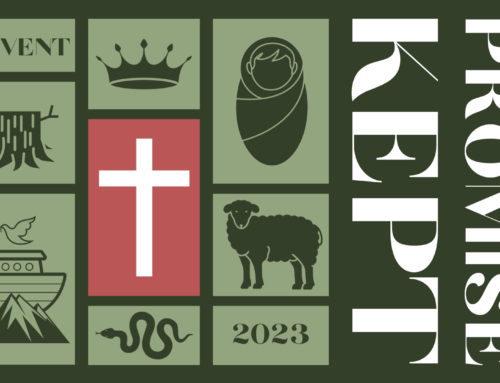The Lord’s Supper: Part Two
By Pastor Josh Wamble
Last week, we started a short series exploring what the Bible says and what Christians have thought about the Lord’s Supper throughout history. If you were not here for that, you can listen to the audio here. This past Sunday (2/12) we spent some time talking about four views of the Lord’s Supper different Christian traditions have held throughout history. If you were not able to attend that service, that audio can be heard here. Below, we will briefly summarize these six historical views.
1. Transubstantiation
This is the understanding the Catholic church has. This label is a combination of trans (to change or transform) and substance (the core or essence of a thing).
There are three aspects to this view. First, when the priest says the words of institution, the bread and wine experience a transformation. Although the bread still looks and smells and tastes like bread, the essence of the bread has been transformed into the actual physical body of Jesus. In the same way, although the wine still looks and smells and tastes like wine, its essence is transformed into the actual physical blood of Jesus.
This brings us to the second aspect of this view. Because this is really Jesus’s body and blood, the Lord’s Supper (Mass) is a re-sacrifice of Jesus. Jesus is being sacrificed again and again for the sins of those participating in the mass.
Thirdly, like the Catholic understanding of baptism, they believe that the mass is ex opera operato. This is a Latin phrase that means literally “from the working, the work” or “from the operating, the operation.” What this means is that the mass works in and of itself. It does not require any faith or repentance or even understanding of the person involved. It is a completely outward ritual or ceremony that works (to provide forgiveness of sins) in and of itself.
Those who believe this way point to a few passages in the Bible. They emphasize a literal understanding of Matthew 26:26-28 and John 6:48-58. When Jesus says, “This is my body.” and “This is my blood.”, they say that he is being literal. They believe that they are just trying to take those passages literally as well.
2. Consubstantiation
This is the understanding the Lutheran church has. Martin Luther was responding to and reacting to the errors of the Catholic church’s misunderstanding of the Lord’s Supper. He wanted to continue to understand Matthew 26:26-28 literally. He insisted that Jesus meant that the bread and the wine was actually his body. However, he did not believe that the Jesus was being sacrificed each time the Lord’s Supper was observed.
He did not think the bread and wine actually became Jesus’s physical body, but he thought Jesus’s body was present “in, with, and under” the bread and wine. (“Con” means with.) He believed the substance of the bread and wine coexists with the body and blood of Christ. Most Lutheran churches have followed this teaching to the present.
3. Spiritual Presence
John Calvin was another Christian leader who lived around the same time as Martin Luther. He too had begun reading the Bible for himself and coming to understand things differently than the Catholic church had been teaching for many years.
Like Luther, he agreed that we should take passages like Matthew 26;26-28 seriously, but he understood them to mean that the bread and wine represent Jesus’s body in a symbolic or figurative way. He did believe that Jesus was present in and during the Lord’s Supper, but in a spiritual sense not physically. He reminded his followers of passages like Matthew 18:20 where Jesus promises his followers that he is present with them whenever they gather together and Matthew 28:20 (The Great Commission) where Jesus promises his followers that he will always be with us. Calvin said it’s pretty clear that these passages are speaking of Jesus being spiritually present with his people not physically, and that is what is happening during the Lord’s Supper as well.
He definitely agreed with Luther that there was no sacrifice happening during the Lord’s Supper, but he did think of the supper as a “means of grace”—God’s grace was imparted to the participant during the supper. Unlike the Catholic view, this was not ex opera operato. God’s grace comes only to those who participate in the supper with faith and repentance trusting in the gospel that it points to.
Today, most Presbyterian churches understand the Lord’s Supper this way. Many Methodist churches do as well.
4. Memorial View
Another important Christian leader at the same time at Luther and around the same time as Calvin was Ulrich Zwingli. While Luther was in Germany and Calvin was in France, Zwingli was leading a movement in Switzerland. (Later, Calvin ended up in Switzerland, also.) Like Luther and Calvin, he had begun reading the Bible for himself and realized that much of what the Catholic church had been teaching for many years differed from what the Bible said. He began leading Christians in Switzerland to follow the Bible.
His views on the Lord’s Supper also differed drastically from what the Catholic Church had been teaching. He also differed from Luther and Calvin. He agreed with Calvin that the bread and wine represent Jesus’s body and blood. He understood Matthew 26:26-28 symbolically or figuratively. He pointed to other passages such as John 6:35, 10:17, and 15:5 where Jesus made similar statements (“I am the gate,” “I am the door,” and “I am the vine”) that were obviously meant symbolically or figuratively.
Unlike Calvin, Zwingli believed that the Lord’s Supper was a memorial that pointed back as a marker or reminder to what had already happened on the cross. He emphasized 1 Corinthians 11:24-25 where Paul quoted Jesus saying to eat the bread and drink from the cup “in remembrance” of me. Zwingli believed that the Lord’s Supper is a remembrance service.
Historically, most Baptist churches have understood the Lord’s Supper this way. Many Pentecostal churches have as well. However, some Pentecostal churches also believe that there is a connection to physical healing in celebrating the Lord’s Supper. They believe Isaiah 53:5 (“with his wounds we are healed.”) means that Jesus’s death secured healing from physical diseases and sicknesses; so, they think the ordinance that memorializes Jesus’s death is connected to these healings also.
As far a which of these views is correct, I think we should completely deny both of the first two positions. We are not offering any kind of sacrifice in any way when we have the Lord’s Supper. Hebrews 10:1-18 makes it clear that when Jesus died on the cross He offered Himself once for all as a single sacrifice for all time. That sacrifice never needs to be repeated; it fully accomplished all that God intended for it to accomplish and as Hebrews 10:14 says, “perfected for all time those who are being sanctified.” The basis of our salvation was accomplished for all time at the cross. Likewise, the bread and wine are not in any way transformed into the body and blood of Jesus during the supper.
I believe that we should think about the Lord’s Supper using a combination of the final two views. Primarily, I believe the Lord’s Supper is a memorial. We are told to “do this in remembrance” of him (remembering both his death and his promise to return). It is also true that Jesus is spiritually present with his people when we eat the meal together. However, He is no more (or less) present during the Lord’s Supper than He is during the sermon or singing or other aspects of the worship service. Moreover, the Lord’s Supper is a means of grace. We do encounter God’s grace when we partake of the supper together, but only in so far as the supper points us to and draws our hearts to the truths of Jesus’s death and return. In other words, we experience God’s grace as we trust in and believe the truth that the Supper points us to.



